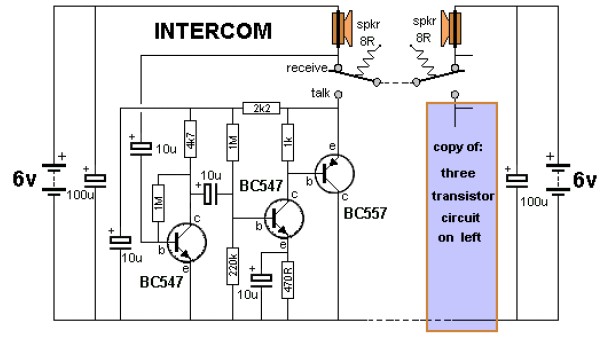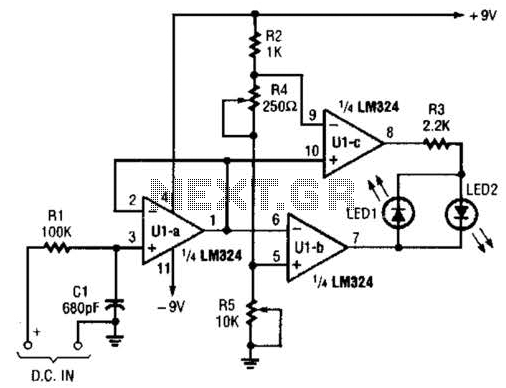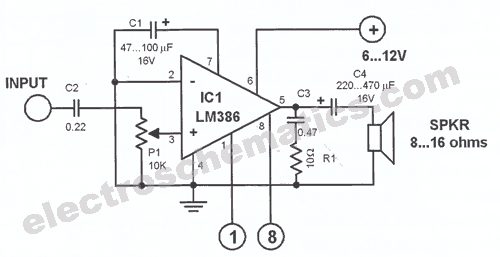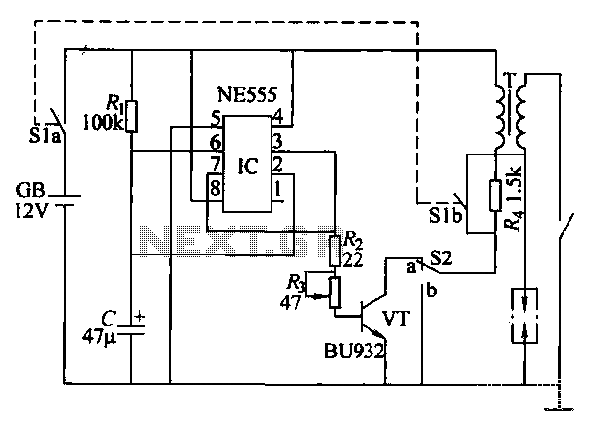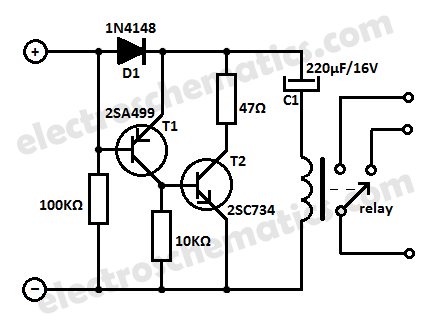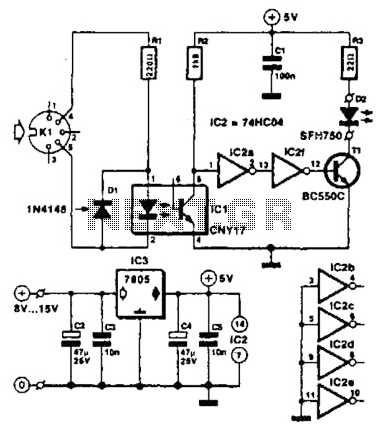
Three-phase controlled rectifier circuit
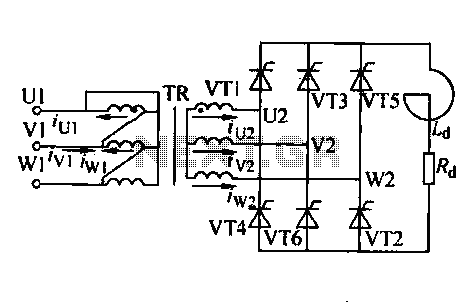
Trigger circuit routing forms include various types such as simple trigger circuits, single-junction transistor trigger circuits, synchronous sine wave trigger circuits, sawtooth transition phase shift (synchronous) trigger circuits, and integrated trigger circuits. This section presents individual cases for introduction due to space limitations. The introduction discusses a circuit theory where a sharp pulse output is used to trigger a TRIAC, activating it. The circuit is powered by 220V single-phase power, which phase-shifts followed by a motor to enable operation. A 30W adjustable potentiometer modifies the output pulse trigger line, altering the conduction angle of VT1 and subsequently adjusting the voltage across the stator windings for stepless speed regulation. The circuit may incorporate two flip-flop circuits to trigger two bidirectional thyristors, facilitating electric reversing speed control. Component specifications include a main circuit capacitor rated at 901 F / 600V, a selected VT1 of 3CTS20A / 800 ~ 1000V, and FU1, FU2 rated at 10A, with additional circuit components chosen based on preference.
The described trigger circuit encompasses several configurations designed to manipulate electrical signals for various applications, particularly in motor control. The TRIAC serves as a key component, allowing for the regulation of power to the motor based on the phase shift induced by the capacitor. The use of a 30W adjustable potentiometer provides flexibility in controlling the output pulse, enabling fine-tuning of the motor's operational speed.
The integration of flip-flop circuits enhances the versatility of the design, allowing for bidirectional control of the motor, which is essential for applications requiring direction reversal. This setup is particularly useful in robotics or automated systems where precise control over motor functions is necessary.
The choice of components is critical for ensuring reliable operation. The main circuit capacitor, rated at 901 F / 600V, must withstand the voltage and provide adequate phase shift for effective control. The selected VT1 transistor, with a rating of 3CTS20A capable of handling voltages between 800 to 1000V, ensures that the circuit can manage the high power requirements of the motor. The fuses FU1 and FU2, rated at 10A, provide necessary protection against overcurrent conditions, safeguarding the circuit from potential damage.
Overall, this trigger circuit design illustrates a sophisticated approach to motor speed control, combining various electronic components and configurations to achieve desired operational characteristics. The modular nature of the design allows for customization based on specific application needs, making it a valuable solution in the field of electronics.Trigger circuit routing forms, such as some simple trigger circuit, single-junction transistor trigger circuit, synchronous sine wave trigger circuit, sawtooth transition phase shift (synchronous) trigger circuit, integrated trigger circuit. For limited space, this section can only include individual cases for the introduction. Introduction to circuit theory t triggered by a sharp pulse output circuit to trigger the TRIAC, turning it on, the capacitor will be 220V single-phase power phase-shift followed by motor t make it work. 30W adjustment potentiometer output pulse trigger line is changed, thereby changing the VT1 conduction angle change given the magnitude of the voltage stator windings, enabling stepless speed regulation.
The circuit may be two sets of flip-flop circuit, triggering the two bidirectional thyristor achieve electric reversing speed control unit. Component parameters: the main circuit capacitor selected phase shift 901, F / 600V. VT1 election 3CTS20A / 800 ~ 1000V, FU1, FU2 election 10A, the rest of the circuit diagram according to preferences.
The described trigger circuit encompasses several configurations designed to manipulate electrical signals for various applications, particularly in motor control. The TRIAC serves as a key component, allowing for the regulation of power to the motor based on the phase shift induced by the capacitor. The use of a 30W adjustable potentiometer provides flexibility in controlling the output pulse, enabling fine-tuning of the motor's operational speed.
The integration of flip-flop circuits enhances the versatility of the design, allowing for bidirectional control of the motor, which is essential for applications requiring direction reversal. This setup is particularly useful in robotics or automated systems where precise control over motor functions is necessary.
The choice of components is critical for ensuring reliable operation. The main circuit capacitor, rated at 901 F / 600V, must withstand the voltage and provide adequate phase shift for effective control. The selected VT1 transistor, with a rating of 3CTS20A capable of handling voltages between 800 to 1000V, ensures that the circuit can manage the high power requirements of the motor. The fuses FU1 and FU2, rated at 10A, provide necessary protection against overcurrent conditions, safeguarding the circuit from potential damage.
Overall, this trigger circuit design illustrates a sophisticated approach to motor speed control, combining various electronic components and configurations to achieve desired operational characteristics. The modular nature of the design allows for customization based on specific application needs, making it a valuable solution in the field of electronics.Trigger circuit routing forms, such as some simple trigger circuit, single-junction transistor trigger circuit, synchronous sine wave trigger circuit, sawtooth transition phase shift (synchronous) trigger circuit, integrated trigger circuit. For limited space, this section can only include individual cases for the introduction. Introduction to circuit theory t triggered by a sharp pulse output circuit to trigger the TRIAC, turning it on, the capacitor will be 220V single-phase power phase-shift followed by motor t make it work. 30W adjustment potentiometer output pulse trigger line is changed, thereby changing the VT1 conduction angle change given the magnitude of the voltage stator windings, enabling stepless speed regulation.
The circuit may be two sets of flip-flop circuit, triggering the two bidirectional thyristor achieve electric reversing speed control unit. Component parameters: the main circuit capacitor selected phase shift 901, F / 600V. VT1 election 3CTS20A / 800 ~ 1000V, FU1, FU2 election 10A, the rest of the circuit diagram according to preferences.
